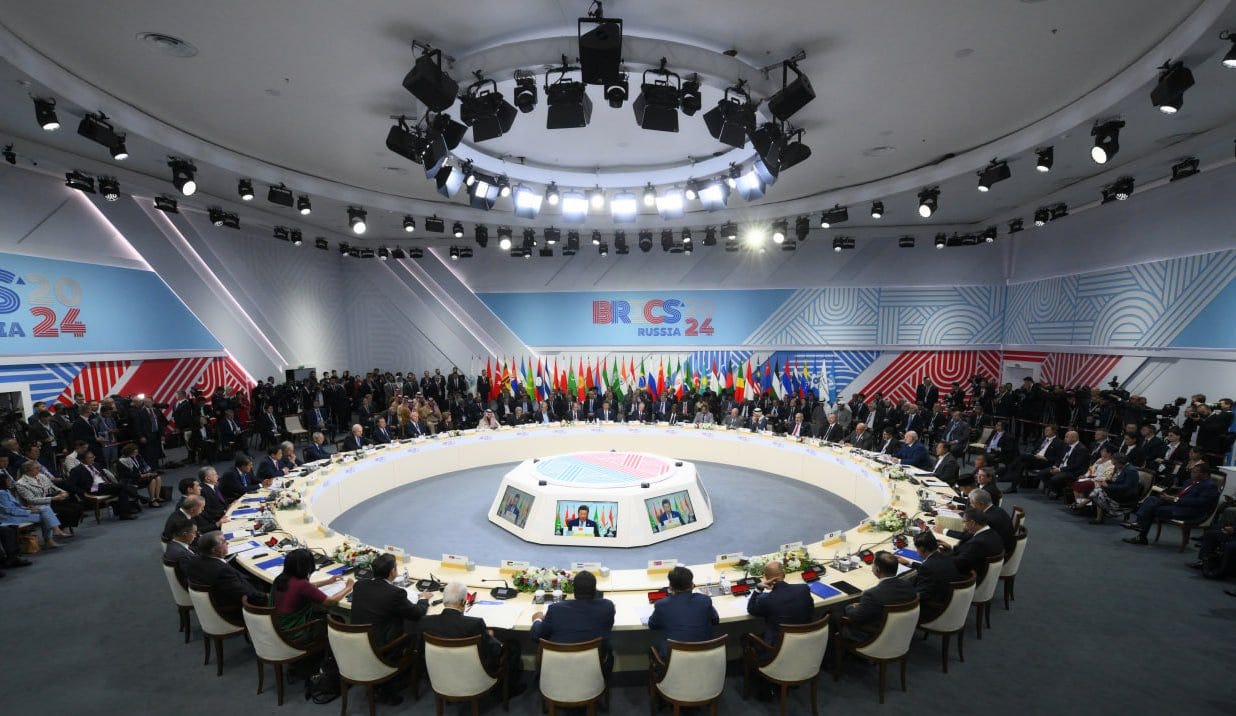ASEAN Reveals New 2025 Agenda at Foreign Ministers Retreat
Plus forum countdown; new nuclear pact; coming chip facility; China aviation links; big energy deal; bill controversy; work futures and much, much more.
Greetings to new readers and welcome all to the latest edition of the weekly ASEAN Wonk BulletBrief! If you haven’t already, you can upgrade to a paid subscription for $5 a month/$50 a year below to receive full posts by inserting your email address and then selecting an annual or monthly option. You can visit this page for more on pricing for institutions, groups as well as discounts. For current paid subscribers, please make sure you’re hitting the “view entire message” prompt if it comes up at the end of a post to see the full version.
For this iteration of ASEAN Wonk BulletBrief, we are looking at:
Assessing the geopolitical and geoeconomic significance of ASEAN’s new 2025 agenda and wider regional and global implications;
Mapping of regional developments, such as forum countdown; flashpoint talks and Indo-Pacific summitry;
Charting evolving geopolitical, geoeconomic and security trends such as new nuclear pact; coming chip facility and China aviation links;
Tracking and analysis of industry developments and quantitative indicators including big energy deal; bill controversy and work futures;
And much more! ICYMI, check out our latest ASEAN Wonk Podcast episode featuring one of the region’s top ex-diplomats on power, diplomacy and order in Southeast Asia’s geopolitical outlook.
This Week’s WonkCount: 2,073 words (~9 minutes)
Forum Countdown; Flashpoint Talks; Indo-Pacific Summitry & More

Risk Futures; BRICS Balancing & Canal Concern
“[T]here is space for regional organizations to expand their roles in managing geopolitical tensions in their regions,” argues a new iteration of the global risks report issued by the World Economic Forum ahead of its annual meeting in Davos. As usual, the report examines risks assessment through various lenses and includes variations in areas like age, time and region (link).
Top Global Risks in the Long Term (10 Years), By Region
“[A]cknowledging the fact that some BRICS members’ interests contradict with those of the US, Indonesia intends to maintain robust engagement with the US,” notes an op-ed published in The Jakarta Post by the spokesperson on foreign affairs at Indonesia’s Presidential Communications Office on the country’s foreign policy under President Prabowo Subianto. The piece addresses several issues apart from Indonesia formally becoming a BRICS member earlier this year, including domestic development and multilateral engagement (link).
“There are not only concerns…but also underexplored opportunities for mitigation,” suggests an article in Nature on Cambodia’s China-backed billion-dollar Funan Techo Canal which had raised a range of issues among some stakeholders in the region and beyond it. The article proposes various steps including flexible water management systems, well-resourced wetland management and a long-term hydroecological monitoring program (link).
Graphical Depiction of Funan Techo Canal Geography
ASEAN Reveals New 2025 Agenda at Foreign Ministers Retreat
What’s Behind It
ASEAN foreign ministers discussed the coming regional agenda for 2025 at a scheduled retreat. The ASEAN foreign ministers retreat on January 19 came amid a flurry of meetings in the first month of 2025. A few Southeast Asian leaders and the ASEAN Secretary-General are attending the World Economic Forum in Davos January 20-24, which ASEAN Wonk understands is expected to feature a dedicated session on ASEAN’s future prospects along with regional voices on wider topics. Ahead of the retreat, ASEAN digital ministers had also convened in Bangkok, Thailand for meetings among themselves as well as with select dialogue partners1. This comes amid ongoing contestation in the sector as well as key priorities such as progress on what would be the world’s first major regionwide digital pact of its kind known as the Digital Economy Framework Agreement which by one count could double the region’s digital economy by 20302.
The retreat marked the first major meeting under Malaysia’s ASEAN chairmanship year with its leader Anwar Ibrahim eager to articulate a clear national and regional narrative. In a wide-ranging speech on Malaysia’s global strategy during his stop in Britain, Anwar delivered his most direct refutation yet of allegations that Malaysia was “pivoting towards China,” noting that “the United States continues to reign supreme” in areas like foreign direct investment and technology3. This comes after what one source characterized to ASEAN Wonk as a “challenging” period of early engagement with the incoming administration of president-elect Donald Trump, which has seen a number of Southeast Asian states quietly position themselves for initial advantage ahead of Trump’s January 20 inauguration as the new U.S. president. Regionally, Malaysia has also signaled its efforts to shape the wider regional geoeconomic conversation by convening an engagement with ASEAN opinion leaders during the first month of the new year4.
Key Recent ASEAN-Related Geopolitical And Geoeconomic Developments In January 2025
Why It Matters
The retreat also highlighted key developments and details in ASEAN’s evolving agenda for 2025 on regional and global issues (see originally generated ASEAN Wonk table below on notable datapoints and additional specifics. Paying subscribers can read on for more on what to expect and future implications in the rest of the “Why It Matters” and “Where It’s Headed” sections, along with paid-only sections of the newsletter as usual).











